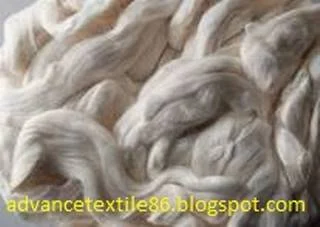What is rayon fiber?
Rayon fiber is a regenerated cellulose fiber produced from natural cellulose sources
like wood and related agricultural products that have the same molecular
structure as cellulose. It is a multipurpose fiber and is broadly claimed to
have the same comforting properties as natural fibers, even if the drape and
lubrication of rayon textiles are often similar to that of nylon. It can mimic
the feel and texture of silk, wool, cotton, and linen. The fibers are easily
dyed in a wide range of colors. It is soft, smooth, cool, comfortable, and
highly absorbent but It does not always separate the body heat, making them
ideal for use in hot and humid climates.
History of rayon fiber
Rayon
is a term that is derived from plant sources in 1924 for synthetic textile
materials containing reconstituted, regenerated, and refined cellulose.
Developed in the late 19th century as an alternative to silk, this first
semi-synthetic fiber is sometimes mistaken for synthetic silk. In London in
1884 and 1885, Joseph Wilson Swan demonstrated fibers made with nitrocellulose
that were treated with chemicals to return the substance to non-combustible
cellulose. Comte de Chardonnet often called the father of the rayon industry,
demonstrated fibers formed in 1889 by mixing a nitrocellulose solution with
spinnerets, solidifying jets rising in warm air, and then recycling them into
cellulose by chemical treatment. The production of Chardonnet silk is known as
rayon and it is the first commercially produced man-made fiber. This process
was very simple and involved a minimum of the waste but it was slow, costly, and
potentially dangerous.
In
1890, another French chemist named Louis-Henri Despeissis patented a technique
for producing fibers from cuprammonium rayon where cellulose could be dissolved
in a solution of copper salts and ammonia and, after extrusion, then be
regenerated in a coagulating bath.
The modern production of viscose rayon has not necessarily changed. Refined
cellulose is first treated with caustic soda. After alkali cellulose is aged, carbon
disulfide is added to form cellulose xanthate that is dissolved in sodium
hydroxide. This viscous solution is stressed by spinnerets. Emerging from the
hole, the jets enter the frozen bath of acid and salt, where they are
re-converted to cellulose and solidify to form a solid filament. The filament
can control and modify the cross-section according to the luminosity, strength,
expansion, size, and demand of the filament during the manufacturing process.
Conclusion
Rayon
fiber is an important fiber like cellulose fiber, even if production in
industrialized countries has declined due to environmental concerns associated
with the release of carbon dioxide and salts into the air. It has many
properties similar to cotton and it can be made similar to silk. In clothing,
it is used alone or mixed with other fibers in cases where cotton is commonly
used. High-strength rayon, produced by drawing filaments during production for
crystallization of cellulose polymers, is made into tire cords for use in
automobile tires. Rayon is also mixed with wood pulp in papermaking.









0 Comments